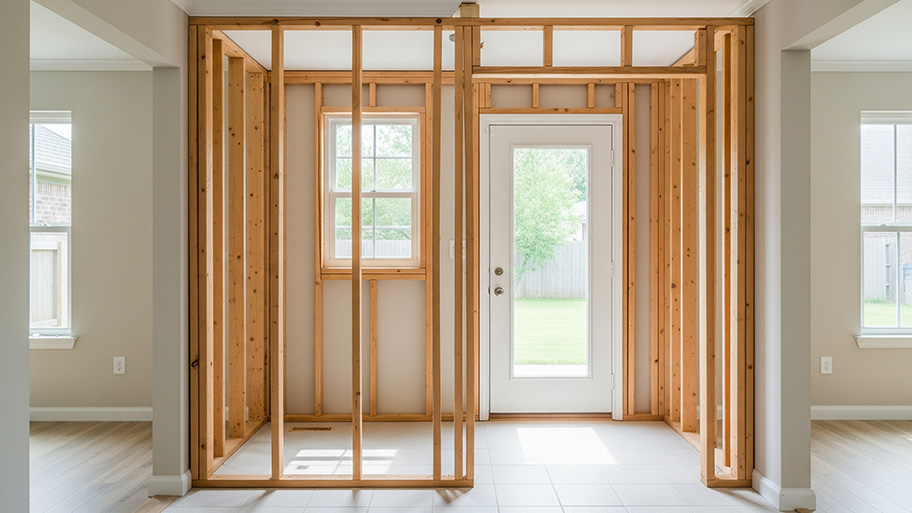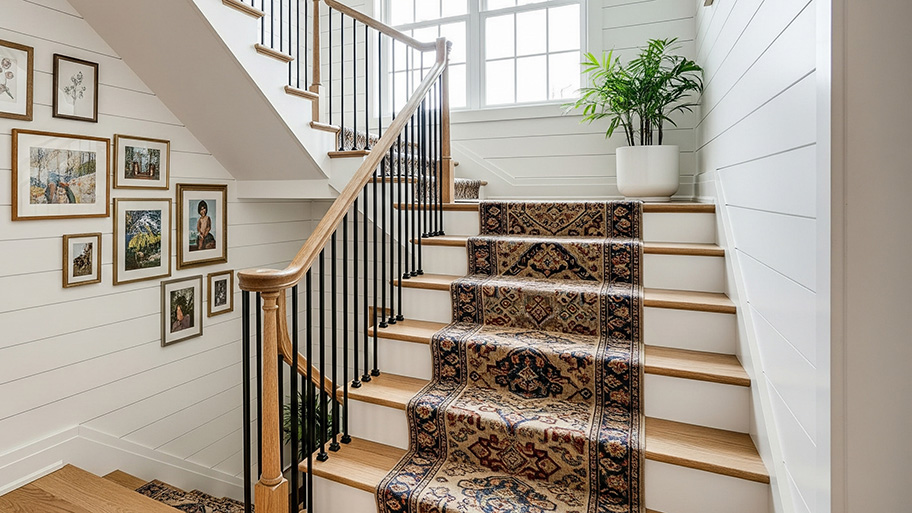
Going from an undeveloped plot to your dream home can be expensive. Learn about the cost to develop land and what factors can affect your total.
Renovations don’t have to break the bank


A HELOC or a cash-out refinance is a good option if you have equity in your home.
Personal loans and credit cards come with fewer restrictions than other options but have higher interest rates.
Use savings as much as you can to avoid paying interest on the renovations.
A home improvement loan may be the best option if you’re buying a home that needs repairs.
Home renovations can create the house of your dreams, but they can come at a steep cost, making bigger projects seem unattainable. However, if you know how to finance home renovations, you could get your project underway sooner than you think. Let’s take a look at all the ways to finance home renovations and how they compare.
A home equity loan is a popular option for financing home renovations if you’ve owned your house for some time and have built up equity. You use the equity in your home as collateral to secure the loan and effectively take out a second mortgage. You get the funds in a lump sum, so it’s best to speak with a home remodeling contractor near you to get an accurate project cost before you secure financing.
These come with relatively low interest rates and have few restrictions on how you spend, so they’re good for everything from building home additions to finishing a basement. Plus, they usually have fixed rates, so there will be no surprises while you repay. However, your house acting as collateral means you could face foreclosure if you can’t repay the loan.
| Pros | Cons |
|---|---|
| Few restrictions | Lump sum only |
| Low interest rates | Must have equity |
| Fixed rates | House as collateral |
A home equity line of credit, commonly called a HELOC, is similar to a home equity loan in that your equity acts as collateral. This means there are fewer borrower restrictions, so it may be a good option if you have a lower credit score. The primary difference is that a HELOC acts like a credit card, so you can borrow against the equity and draw money out as you need. This is helpful if you haven’t yet hired a pro for home renovations and don’t know what your remodel will cost in advance.
HELOCs let you borrow up to 85% of your equity, which is slightly lower than the 90% you’d see from a home equity loan. The rates are variable, too, which could lead to higher interest payments and a bit more uncertainty on repayment amounts in the future.
| Pros | Cons |
|---|---|
| Few restrictions | Variable rates |
| Draw as you need | Must have equity |
| Low interest rates | House as collateral |
Going with a cash-out refinance means closing out your existing mortgage and refinancing with a new mortgage. If you have equity in your home, you can take that out as cash, effectively paying yourself for the equity you accrued. This could mean financing a higher home price if your value increased since you took your first mortgage, which means you could see higher interest rates and higher monthly payments. Your APR could be lower, though, if current interest rates are higher than your original ones.
There are no restrictions on what you can do with the cash you get from the transaction, but there are more lending restrictions because you’ll need to qualify for a new mortgage at the higher property value. You’ll also face closing costs.
| Pros | Cons |
|---|---|
| Few restrictions | Closing costs |
| Could be lower APR | House as collateral |
| Fixed-rate option | Must have equity |
Personal loans are those you get from lenders based on your credit score and credit history. They don’t use your home as collateral, which is a positive thing because failing to repay won’t lead to foreclosure. However, your lender assumes more risk without collateral, so interest rates tend to be higher.
Personal loans give you access to cash quickly, so they’re a good option if you need emergency repairs and can’t wait weeks for your lender to approve a home equity loan or HELOC. However, they have a shorter repayment time of one to seven years. Higher interest rates and short repayment times mean higher monthly payments. Use a home renovation cost estimator to find out exactly how much you need before taking out a loan to avoid excess interest.
| Pros | Cons |
|---|---|
| No foreclosure risk | High interest rates |
| No closing costs | Short repayment time |
| Fast access to cash | Need good credit |
Government loans, called FHA Title 1 loans, are backed by the U.S. Department of Housing and Urban Development, and you can use them to finance specific renovations, like improving efficiency or installing accessibility equipment. These come with relatively low interest rates and repayment terms of up to 25 years, which means low monthly payments.
Government loans come with tight restrictions on how you spend the money, and your house will act as collateral, so you could face foreclosure if you can’t repay.
| Pros | Cons |
|---|---|
| Low interest rates | Many restrictions |
| Long repayment terms | Less availability |
A home improvement loan, commonly called a 203k loan, may be a good option if you’re buying a home that needs repairs. Instead of a traditional mortgage, you add remodel costs to your initial mortgage.
Home improvement loans come with tight restrictions for what they’ll cover, and you’ll need to get approval for all facets of the renovation or remodel you’re planning when you apply.
| Pros | Cons |
|---|---|
| Low interest rates | Only for buyers |
| Long repayment terms | House as collateral |
| Bundled loan | Many restrictions |
Using a credit card to pay for home improvements is possible if your contractor accepts credit cards or if you take out a cash advance on your card. Credit cards have lower loan amounts and higher interest rates than most other options, so they’re only good for small-scale renovations, like remodeling a bathroom. You can avoid some interest by paying off the loan within the interest-free period, but this is a short time scale of 12 to 18 months.
Credit cards are unsecured, so you won’t be at risk of foreclosure if you can’t pay. However, that means higher interest rates of up to 36%.
| Pros | Cons |
|---|---|
| Few restrictions | High interest rates |
| No foreclosure risk | Low loan amounts |
| No equity needed | Short repayment time |
Lastly, you can use your savings to finance home renovations. This is the best way to avoid paying interest and higher home renovation costs over time, but you’ll need money saved up before beginning the work. For larger projects, like renovating a kitchen, you can use savings to fund part of your remodel costs, and couple that with another home renovation financing option.
| Pros | Cons |
|---|---|
| No interest | Need money saved |
| Fast access to cash | May also need a loan |
From average costs to expert advice, get all the answers you need to get your job done.

Going from an undeveloped plot to your dream home can be expensive. Learn about the cost to develop land and what factors can affect your total.

Sometimes, all your home needs is a new wall to make a room or provide an updated function to an existing space. Learn how much it costs to install a new wall.

Discover stair repair cost estimates, including average prices, key cost factors, and tips to help you budget for your stair repair project.

Want to learn how to frame a ceiling for drywall? Keep reading for a step-by-step guide to tackling this impressive DIY on your own.

Deciding between using cedar vs pressure-treated wood for your outdoor project comes down to budget, appearance, durability, maintenance, and other factors.

Contractors expect you to get multiple quotes and know they won’t win your business every time. If you’re wondering how to tell a contractor you went with someone else, an honest and kind approach is key. We’ll cover what to do (and say) here.